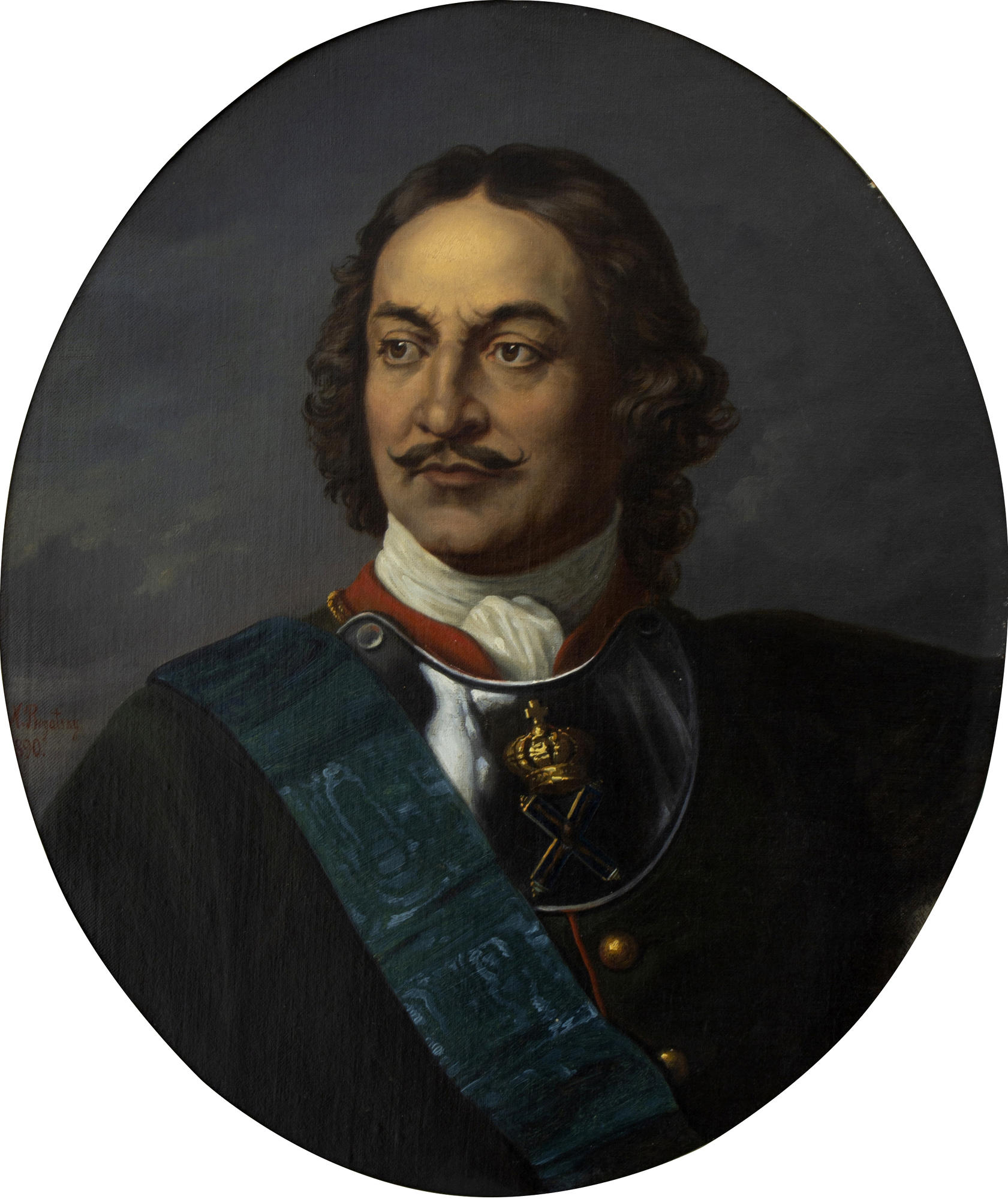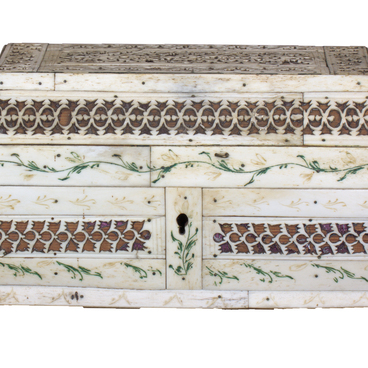This portrait of Peter the Great was painted by Nikolai Bogatsky, a Russian artist of the second half of the 19th century. The portrait was painted in 1890. Probably, the painting was commissioned specifically for Arkhangelsk, where there was a special tradition of veneration of Peter I. The history of the city is inextricably linked to his name. The tsar visited the city on Dvina three times (1693, 1694, 1702), and the memory of his stay in Arkhangelsk was carefully preserved.
On June 17, 1898, the Arkhangelsk vice-governor Dmitry Ostrovsky donated the piece to the Arkhangelsk City Public Museum, the forerunner of the Arkhangelsk Regional Museum. The portrait was repeatedly exhibited.
This portrait is an incomplete (half-length) copy of the painting by Paul Delaroche ‘Peter the Great, Emperor of Russia’ of 1838 (the Hamburg Art Gallery). The canvas is oval in shape, enclosed in an oval gilded frame.
Peter I is captured in his adult years, already the Russian emperor. The tsar’s image is complex and multifaceted: on the one hand, he is the Emperor, the Conqueror, a strong-willed and active genius, but on the other: " in much wisdom is much grief’. The work conveys the concept of the image of the tsar as a “political gentleman”. This aspect of his personality played a significant role in the iconography of Peter throughout his reign.
The emperor is depicted in a dark green military uniform of the Preobrazhensky regiment he created, the order on his chest is the cross of St. Andrew, a see-coloured moiré ribbon goes over his shoulder. The three-quarter turn of the figure is designed to enhance the dynamics of the image, and the background of the portrait - to emphasize its greatness. Peter’s figure seems to be immersed in a smoky grey environment, naturally tied with space, and dominates in it. The colour scheme of the portrait is a combination of red, white and gold, which also emphasizes the regal image. Nikolai Bogatsky, who showed his talent as an excellent copyist, managed to convey the variety of brushstrokes and mastery of glazing technique combining rich gradations and the unusual luminosity that distinguishes the picturesque manner of Paul Delaroche.


